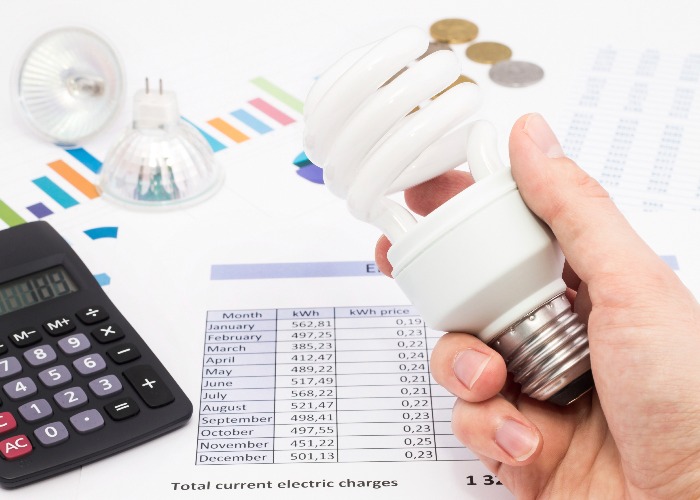Energy bills: is it worth signing up for a fixed energy tariff?

Signing up for a tariff that will cost £3,000 may sound mad, but it could work out as a money saving move if the price cap continues to rise.
It seems a little perverse to be thinking about energy bills when the nation is ‘enjoying’ record high temperatures, but our energy costs are a big concern for millions of people across the country.
At the moment, switching to a new tariff isn’t really possible. It’s not just that suppliers aren’t offering deals for new customers ‒ they aren’t offering them for their existing ones either.
There are a couple of exceptions to that from EDF which has deals available for existing customers who want to fix their prices.
For example, EDF has a couple of two-year fixed tariffs, charging an eye-watering £3,050 a year for typical households, while until recently E.On had a similar tariff for its current customers to move to.
There are also some deals that are available on the open market. Utility Warehouse has a one-year fixed tariff, which is open to everyone, and will cost the typical household £2,850 a year for their energy use.
There is a big caveat though, in that you’ll need to sign up for at least two other services from Utility Warehouse at the same time, like broadband, mobile phone or boiler cover.
How they compare
Fixed-rate deals aren’t subject to the energy price cap ‒ the cap is only there to limit what suppliers can charge on their standard variable tariffs.
As a result, these tariffs are significantly more expensive than you’ll pay while you’re on the cap.
At the moment the cap is set at £1,971 per year, having jumped by 54% back in April from its previous level of £1,277.
By comparison, you’re looking at paying at least an extra 50% by signing up to a fixed tariff, which in usual times would strike me as utterly bonkers.
The energy price cap ‒ a moveable feast
The trouble is, these aren’t usual times. Far from it.
Because we know that the energy price cap will not be at its current level of £1,971 for long. Currently the cap is reviewed twice a year, in February and August. Any changes to the cap then kick in two months later, so in April or October.
And we know for a fact that the cap is going to increase sharply.
Back in May, Jonathan Brearley ‒ the chief executive of Ofgem, which sets the cap ‒ told MPs that on the current trajectory, the price cap was on course to hit £2,800 in October.
That, it goes without saying, is an astonishing amount of money.
However, since then the situation has actually gotten worse. While Brearly wouldn’t give a figure, in his latest updates he said it was “clear” that his estimate was too low.
So what are we going to be looking at? The analyst Cornwall Insight reckons that the cap will jump to a frankly farcical £3,244 in October.
And then next year the cap will be reviewed on a quarterly, rather than biannual basis, with Cornwall Insight predicting it will hit £3,363 in January.
If you just winced, you’re not alone.
Even with the support measures the Government has announced, it means that our energy bills are about to rise dramatically.
And with little sign that this particular crisis is nearing its conclusion, it’s not exactly out of the question that there will be further increases next year as well.
loveMONEY verdict: it’s not mad to want to fix
With the prospect of such massive increases ahead of us, it seems perfectly sensible to me to at least consider switching to one of the few fixed tariffs available, should you qualify.
After all not only are they going to cost the typical household less than they would pay by sticking with the energy price cap (assuming it does in fact increase as expected), but it would also be in place for the winter months when our energy use rises most substantially, offering further protection against even bigger costs.
It seems bonkers to look at the prospect of paying around £3,000 a year for energy as desirable, in any way.
Yet the current situation is bonkers all-round.
I have always preferred the certainty offered by fixed deals, whether that’s on my mortgage, energy bill or anything else.
Not only does it make budgeting more straightforward, it also removes the inevitable stress that you may feel in the run-up to an announcement of potential increases.
There is a danger, however, that the situation changes rapidly and prices begin to fall.
By making the price cap reviews more frequently, the idea is that there will be less sudden and sharp changes, and may also mean that the cap can be reduced more swiftly if the wholesale costs drop.
Personally, I couldn’t move to one of these tariffs. But I would certainly be giving it some serious thought if I could.
Most Recent
Comments
-
It's a pain to see these spam messages posted on this site. Lovemoney - there's a pattern to some of these wherein they often use a capital O in words inappropriately. For example, wOrking hOme mOnth pOssibility. A bit of clever sOftware may well find these instances. However, changing to a rather expensive fixed tarif now when you'll not be using too much energy seems sensible if the media is to be believed and rates move toward £3,200 per year. But, how much more sensible would it be to frack the shale gas under this country - particularly in the Bowland valley. Let's export this to Europe and save the German's having to burn quite dirty coal. But, what the heck to do I knOw? :-)
REPORT This comment has been reported.
Do you want to comment on this article? You need to be signed in for this feature









19 July 2022